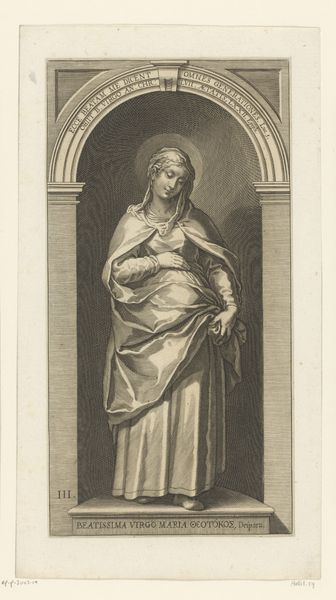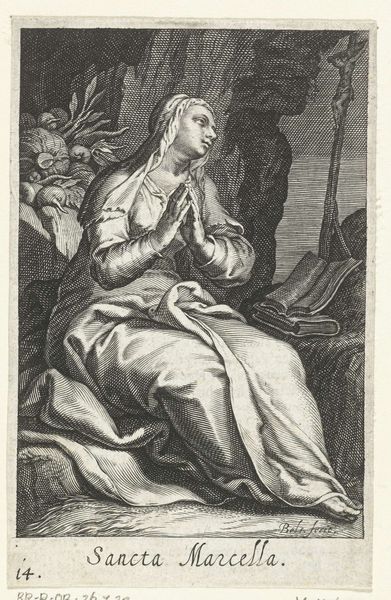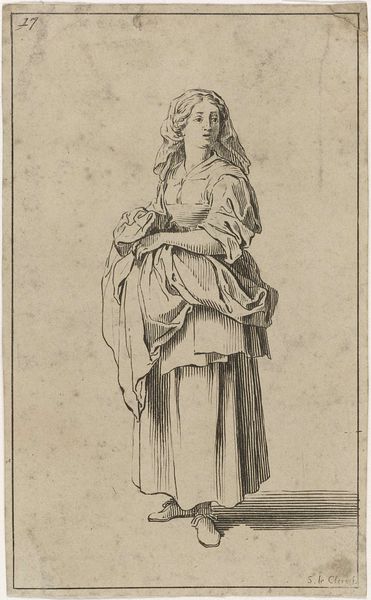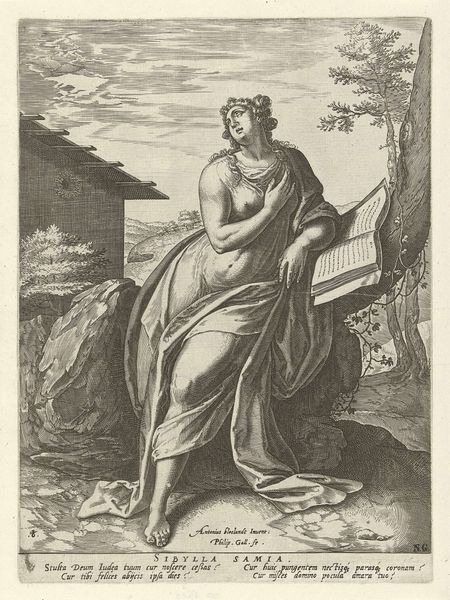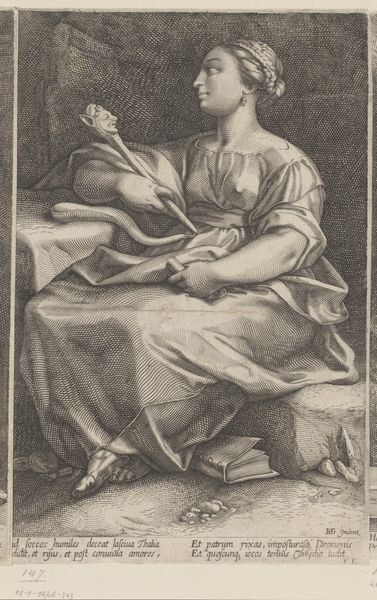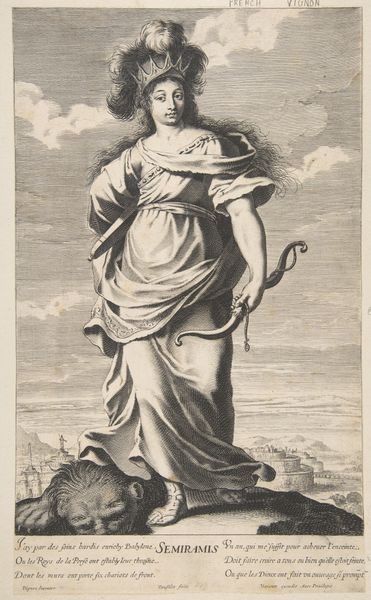
drawing, print, engraving
#
drawing
#
baroque
# print
#
history-painting
#
engraving
#
virgin-mary
Dimensions: Sheet (trimmed): 13 3/8 × 8 9/16 in. (34 × 21.8 cm)
Copyright: Public Domain
Editor: Here we have "The Blessed Virgin," an engraving from 1726 by Simon de la Vallée. There's a serene quality to her posture and the landscape behind her; she almost appears to be floating. What are your thoughts when you look at this piece? Curator: I see the Virgin Mary not just as a religious figure, but as an archetype of purity, compassion, and maternal strength. Notice how the artist uses classical architecture juxtaposed with the natural, almost Arcadian, landscape. Do you think that suggests a specific connection between faith and earthly life? Editor: That’s interesting. I hadn’t considered that, but it makes sense. Is that common in baroque depictions of her? Curator: Indeed, the baroque style often used grand, theatrical settings to connect divine stories with tangible realities. Her open gesture, the soft light, and the text at the bottom further enhance the feeling of invitation and receptivity. Considering this was a print, what do you think that would have represented culturally? Editor: I suppose it was more accessible, perhaps intended for personal devotion. Curator: Precisely! Prints like these allowed wider audiences to engage with religious iconography, fostering a sense of collective identity and shared cultural memory. A far reaching and affordable signifier. Editor: It's amazing how many layers of meaning can be found within one image! Curator: Exactly, and it’s these layered meanings that carry on and contribute to cultural narrative. Hopefully it invites more curiosity and discourse!
Comments
No comments
Be the first to comment and join the conversation on the ultimate creative platform.




